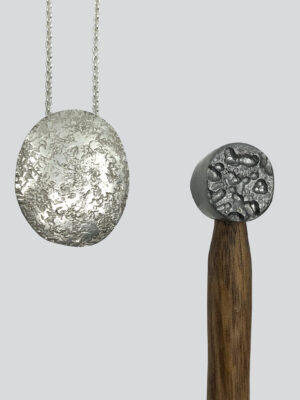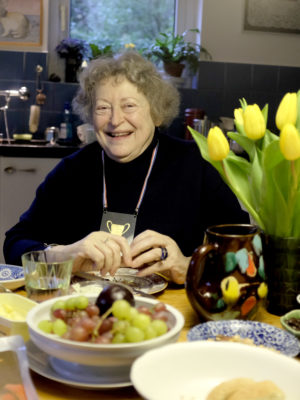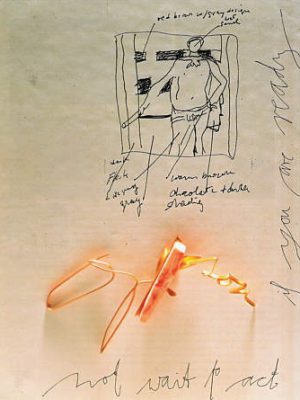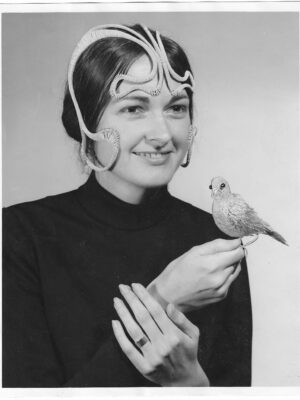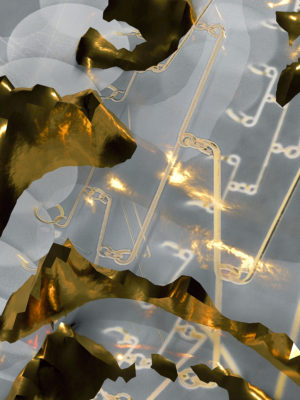Fast forwarding ten years, I decided to check in with Claire and see what she’s been up to since then. After having co-founded Radiant Pavilion, the premiere jewellery gathering in Australia, and now with more than ten solo shows behind her, she is at the finish of a PhD, with new work ready to show at the Frame installation at the 2023 Munich International Trade Fair, (IHM). It is the result of a broad investigation into the relationship of maker and tool, in the final phase of which she ‘recorded’ long walks into a strip of wax beneath her shoe, then engraved the imprint of the wax into self-made hammers (!) which she then used to texture the surfaces of silver pendants. Each is named for the walk that created it, and accompanied by a photograph of the artist’s foot, mid-step. These extremely limited edition pieces, photos and hammers included, will be on view at Atta Gallery during the IHM. But as the artist will not be present, this sneak peek is about as close as we can get to the captivating world of Claire McArdle- a scientist of craft, whose approach is both playful and undaunted by technical limitation. True to form, her recent research had been as methodical and ambitious as early projects, while still following the theme of community engagement and theory developed through a kind of holistic hypermaking- building the tools to build the jewels themselves.
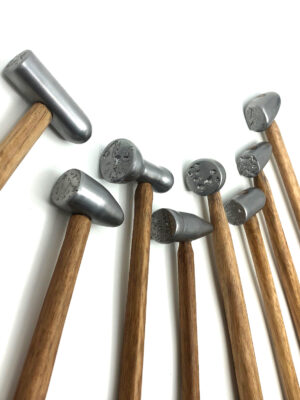
Margaret: Claire, I noticed from early on in your work the recurring themes of public interaction and participation, inviting others along in your research process. Sounds like you start with a frame and just see where everyone takes it?
Claire: I like that idea of people doing different things from the same starting point. Also, I do love a bit of data. In my PhD I did 42 interviews with makers in the contemporary jewellery & object field in Melbourne, which was really interesting. I had ten set questions, very structured, but the responses were so different- for some people different questions elicited completely different stories. And if I just asked that one question to everyone, I would’ve missed some of the stories. I’d send them the questions in advance, then I would go to their studios, ask them the questions and record the answers. That was another thing. Because jewellers are often pretty solitary; in a little space and you sort of develop your own techniques and ways of doing things. So it’s really interesting to see the different tools that people value. That’s mostly what it was about, but also the different ways that they do things.
M: What about the Chance Tool project that I saw on your Instagram? Was that an organised thing like a contest or how did you structure that?
C: I was just using it for my own work to disrupt it be-cause, when else in my practice am I going to have the luxury of time that a PhD gives, to test things out…like methods of making? So I was using it on my own to see where that could push me, and I think some of the work that I’ve made wouldn’t have been what it is without it, which is really good. I made a list of eight actions and times. I roll it once to get an action; then I roll it again to get the timeframe in which I need to implement this action into my making. And then I thought, well, I’d love to get some data on this and see what other people think about it… So I made a hundred of them. Which took ages.I wanted it to be quite simple and also wanted it to be made out of recycled materials. So it’s made from copper plumbing pipe from the scrapyard. I wanted to turn it into an octagon to make the eight sides, and so I made a draw plate to draw the tubes down from a circle into the octagon… It’s from an old file. It took so long, but it works really well, so it was definitely worth it.
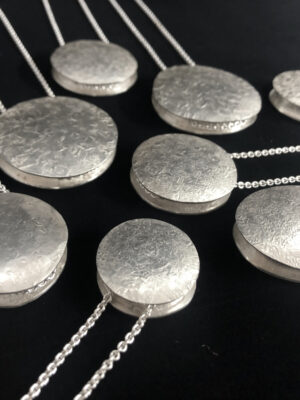
In the PhD, I talk about how my grandpa was a boiler-maker and he could just make anything. So I think it was a bit of that coming through, just realising that I could make tools. Because I’ve already got all these metal skills, you know, it doesn’t fully translate, but it’s pretty similar, just scaling up a little bit a lot of the time. And so realising that was much more of a cognitive wall that I had to get over rather than a skill-based one.So I made a hundred of those and they came in these cute little boxes that fold out with the instructions. I made the boxes as well, and a code book that you could write the actions and your responses and experiences in. I made those as well. So yeah, that took over a year to make, on and off. Then I put a social media call out to makers around Australia who wanted to have a go with it. And they were all gone in a couple of days. And then I sent a 12 question survey to fill in and I got a bit over half of them back, which was pretty good. Some people used it for writing, or just for little bits of play rather than finished, big pieces. It’s really a set of rules and you put in the actions. Like one of my actions was, ‘take a break’. Some people had ‘ask for advice’, which I thought was really interesting.
‘You’ve already got all these metal skills- and so realising that I could make tools was much more of a cognitive wall that I had to get over than a skill-based one.’
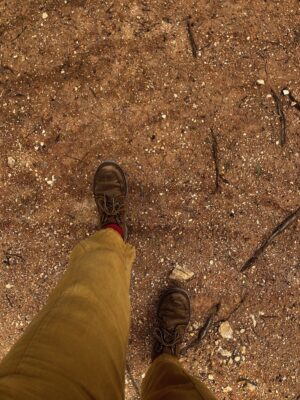
M: I wanted to ask you about ‘Unearthed’, the Metro Tunnel program. It sounds like this project must have been in cooperation with the city of Melbourne- Is this typical there- such a level of outreach to the artistic community from the local government?
C: Yeah, it’s pretty good. They had this huge project where they’re putting in a whole other train loop in the city, and because it’s under the main streets in Melbourne, they had all these archaeological digs. Obviously all the good stuff went to museums, but there were all these fragments that were still really interesting, just not museum quality. So they put a call out to different places, and one of the places who put their hand up was called Craft Victoria- a really great institution within Melbourne and Victoria as a whole that shows off all this craft based work within the state. And so they put forward to get craftspeople to respond to the fragments in different ways. And I was one of the artists that got asked to do that. And so I chose this pickaxe head and it was stunning. I decided because it was a pickaxe, which was used for digging up the earth and taking things from the earth, to make a set of gardening tools, which would give back to the earth. It’s still a tool, but coming from a different perspective of healing. And I made two sets, so that you could do it with someone else, creating a sense of community, and the importance of relationships and looking after the earth.
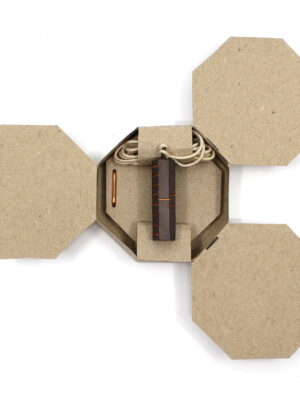
M: You mentioned that you’re not working with Radiant Pavilion anymore, but I wanted to hear a little bit about your experience with that. One of the articles I read referred to it as a ‘Schmuck of the South’. But do you think that being a maker made a difference in terms of what you prioritised or how you approached it and structured it?
C: So me and Chloë Powell started it and she’s still running it. But I think for me at the start, I’d been to Munich a few times and it was just so exciting. It wasn’t like anything I’d ever really been to before, to be able to just go around and see contemporary jewellery in such a highlighted way all over the city. Seeing all these things that had been built up to me at Uni, and having this map and trying to see all the exhibitions I could. And I just wanted to bring a bit of that home- because Australia, it’s a big place, very spread out- so it’s great just to have something that brings people together physically. And not just Australian jewellers, but a lot of New Zealand jewel-lers. They have such a strong contemporary jewellery community, their work is amazing, and they’re so active… Because it’s the things that happen around the jew-ellery events – the conversations, the meetings, the friendships that happen that can really push people in new directions and change their making. And then suddenly, you know, you’re having a collaboration with someone or just asking them their opinion about your work. And it just took off. So obviously it was something that people were keen on because it’s still going.
M: Did you see a really marked impact on the community from that event?
C: I think so. I think there was definitely more communi-cation and really exciting things happening between makers. As well as just being able to present the work and having it as a really structured place that if anyone was looking, like any curators, galleries, they can come and see this amazing overview of everything that’s happening in one place and really get an idea of the energy that’s within the field. It brings attention towards the field as a whole. Because you talk to most people on the street and they don’t really know what contemporary jewellery is. So it’s wonderful to have new people get interested and realise that contemporary jewellery is a thing, and it’s a thing that a lot of people are really passionate about! People coming together, and being with the people that understand them is really nice. I was sad to have to leave to put my PhD at the forefront- it’s just a lot of work.
But yeah, who knows what will happen in the future?
Melbourne based jewellery artist Claire McArdle has held over ten solo exhibitions including three overseas in Estonia, Germany and Thailand, and is currently undertaking a PhD at RMIT University, Melbourne. Her work will be on view courtesy of Atta Gallery at the International Handcraft Fair in Munich, where she will be showing Walking Hammers, a series of travels captured visually through the literal path traveled.
This article is published in the printed edition of Munich Jewellery Paper, which is available for purchase through our web shop. Click on here to purchase the Paper.
Cover image: Claire McArdle, A Bush Walk, neckpiece and hammer
